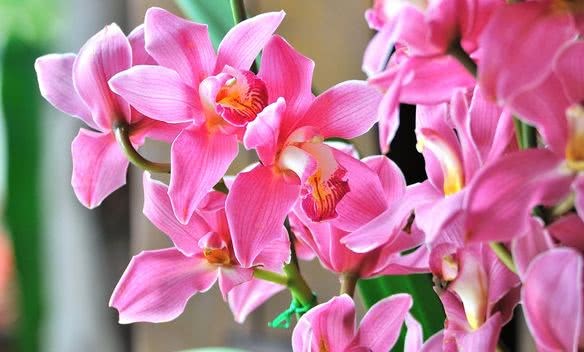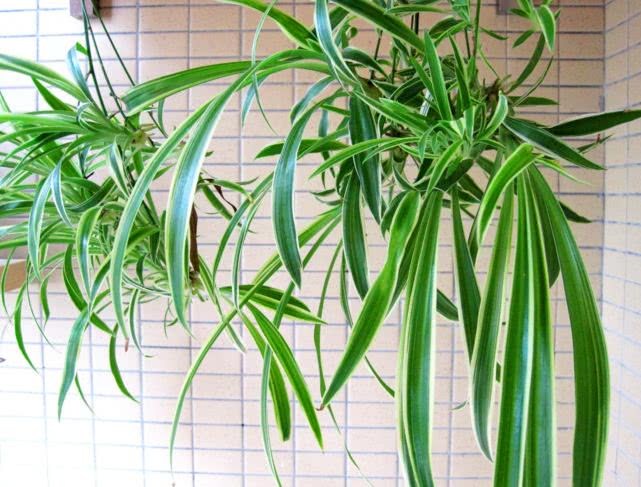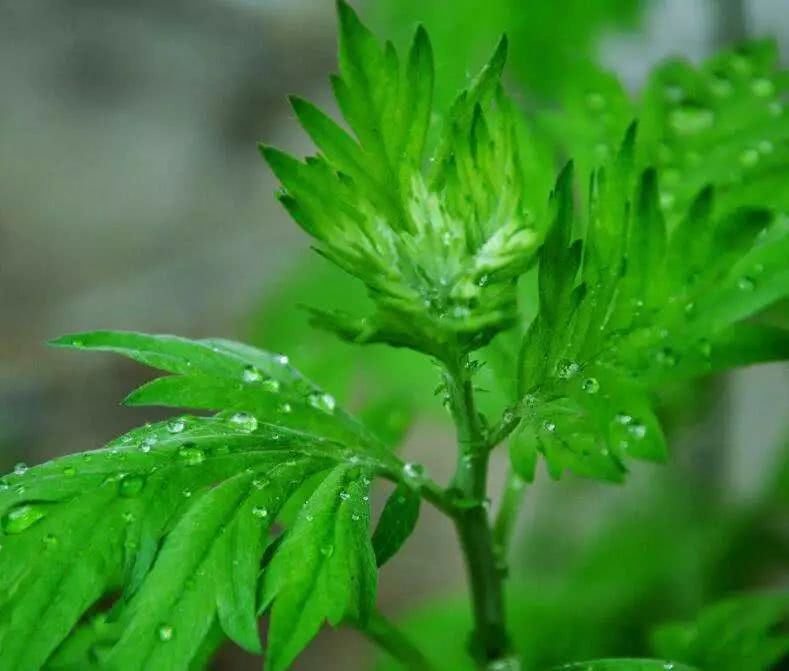Cymbidium originating from India has been hybridized to a world variety in China.

Cymbidium is also known as Cymbidium and cicada orchid. It belongs to Orchidaceae and Orchidaceae. They are some epiphytic large flower species and artificial hybrids of Cymbidium native to India, Myanmar, Thailand, Vietnam and southern China.
Huihua orchid petals are very large, the diameter can reach 10cm, hence the name "Dahua" Cymbidium. There are many varieties, up to thousands. It is a variety group bred by large flower attached species, small flower vertical species and some ground orchids after more than 100 years of artificial hybridization. Cymbidium cymbidium has long green leaves, rough flower posture, bold and magnificent, is the world-famous "orchid star". With the delicate fragrance and elegance of the national orchid and the rich and colorful of the foreign orchid, it is very popular in the international flower market and is deeply loved by flower lovers.
The plant of Cymbidium is tall and straight, the flower stem is erect or drooping, and the flowers are colorful, which are mainly used as potted ornamental plants. Suitable for indoor flower racks, balconies, windowsills, more elegant and luxurious, with higher taste and charm. Such as a number of plants combined into a large potted plant, suitable for hotels, commercial buildings, stations and airport hall layout, extraordinary style, eye-catching. Cymbidium is loved by people because of its magnificent planting appearance and huge flowers.
For the planting of Cymbidium, we should pay attention to the following points:
Cymbidium has high requirements for water quality, likes slightly acidic water, and is sensitive to calcium and magnesium ions in water. Rain Water watering is the most ideal. Higher air humidity is needed during the growing period. For example, the humidity is too low, the plant growth is poor, the root growth is slow and small, the leaf becomes thick and narrow, and the leaf color is yellow. Generally speaking, Cymbidium is afraid of dry but not wet.
Light is an important factor affecting the growth and flowering of Cymbidium. Cymbidium belongs to the light-loving class in Orchidaceae. Sufficient light is beneficial to leaf production, flowering stem and flowering. Too much shade, leaves slender and thin, can not be upright, false bulbs become smaller, easy to get sick, affecting flowering. Shading 50% to 60% in midsummer, and more sunshine in autumn, which is conducive to flower bud formation and differentiation. Rainy and snowy days in winter, such as the increase of auxiliary light, is very beneficial to flowering.
Cymbidium likes warm winters and cool summers. The suitable temperature for growth is 10-25 ℃. The night temperature is about 10 ℃. The leaves are green, the flower buds grow and develop normally, the flower stems elongate normally and blossom from February to March. If the temperature is lower than 5 ℃, the leaf is yellow, the flower bud does not grow, the florescence is postponed to April to May, and the flower stem does not elongate, which affects the flowering quality. If the temperature is about 15 ℃, the flower bud will suddenly elongate and blossom from January to February, and the flower stem is soft and can not stand upright. For example, the night temperature is as high as 20 ℃, the leaves grow luxuriantly, affect the flowering, and the buds will wither and yellow. In short, the bud formation, stem extraction and flowering of the orchid all require a large temperature difference between day and night.
-- END--
Everything is wonderful, there is a praise mall in the flower school.
There are flowers and love, a school of flowers
- Prev

Don't be silly to raise hanging orchids. Just throw a root into the water with clear water. Its branches can't hold back.
With the continuous improvement of living standards, what people have pursued is not material satisfaction, but spiritual enrichment. For example, in life now, more and more people like to take a walk-and-go trip, while others will be there.
- Next

Moxa grass, the king of all kinds of grass.
Soaking feet is a necessary part of health. Moxa grass is respected as the king of all kinds of grass. It is often seen in rural areas. Using it to soak your feet can not only get rid of all kinds of diseases, but also increase your life span! Moxa soak feet, prolong life / the efficacy of moxa soaking feet / moxa.
Related
- Wuhan Hospital Iron Tree Blooming Result Was Instantly Frightened by the Gardener Master
- Which variety of camellia is the most fragrant and best? Which one do you like best?
- What is the small blue coat, the breeding methods and matters needing attention of the succulent plant
- Dormancy time and maintenance management of succulent plants during dormancy
- Minas succulent how to raise, Minas succulent plant pictures
- What are the varieties of winter succulent plants
- How to raise succulent plants in twelve rolls? let's take a look at some experience of breeding twelve rolls.
- Attention should be paid to water control for succulent plants during dormant period (winter and summer)
- Watering experience of twelve rolls of succulent plants
- Techniques for fertilizing succulent plants. An article will let you know how to fertilize succulent plants.

